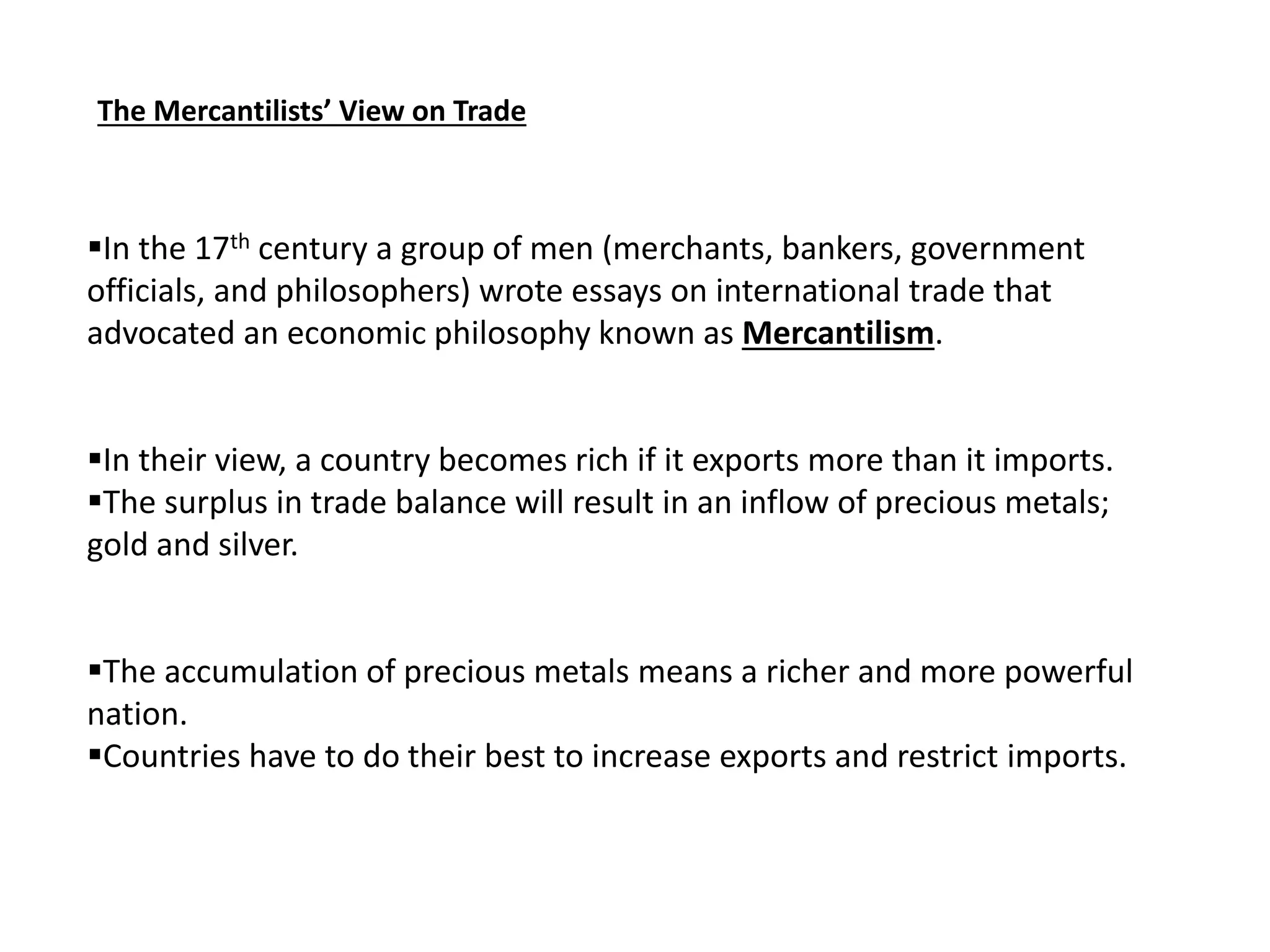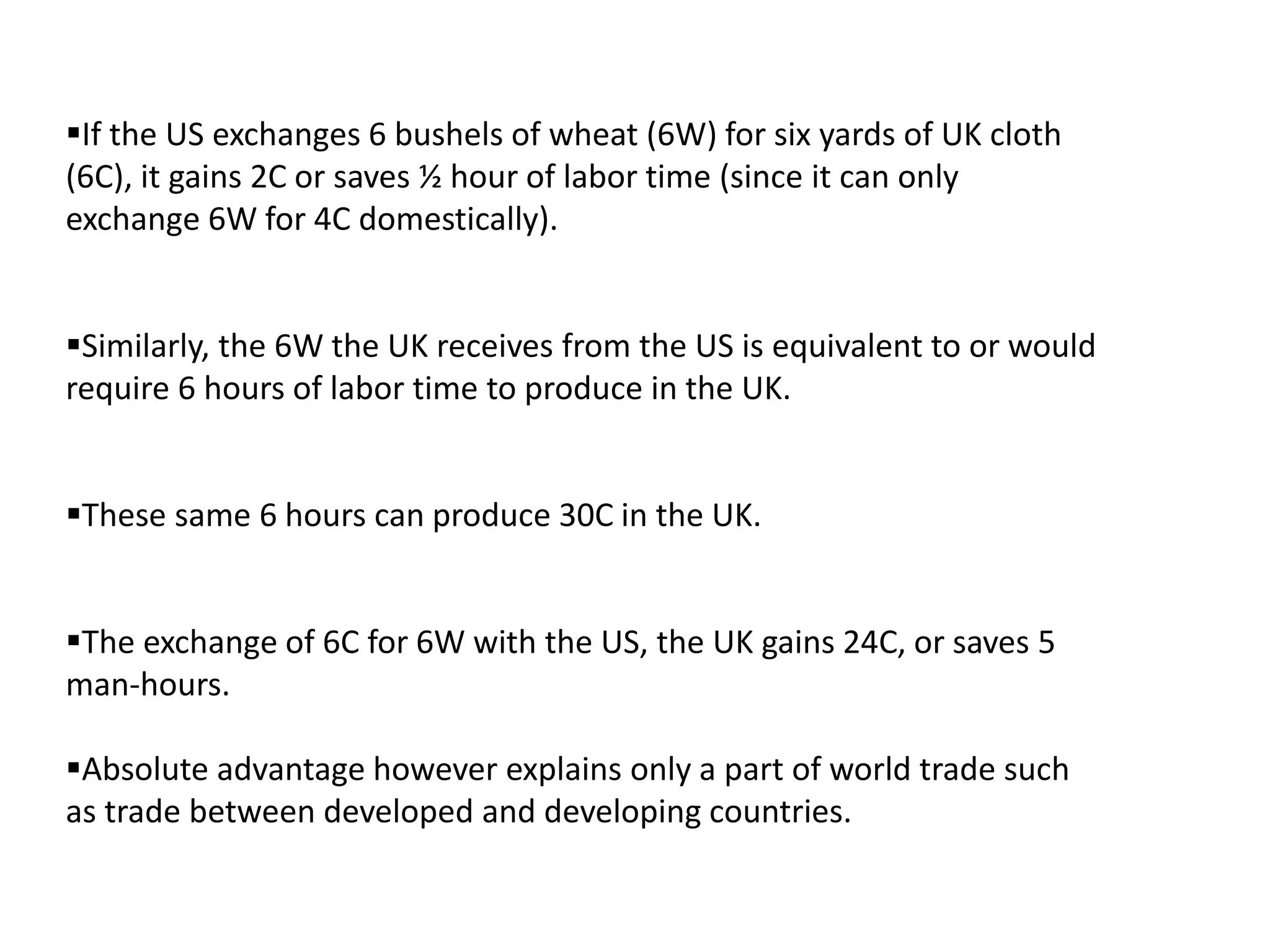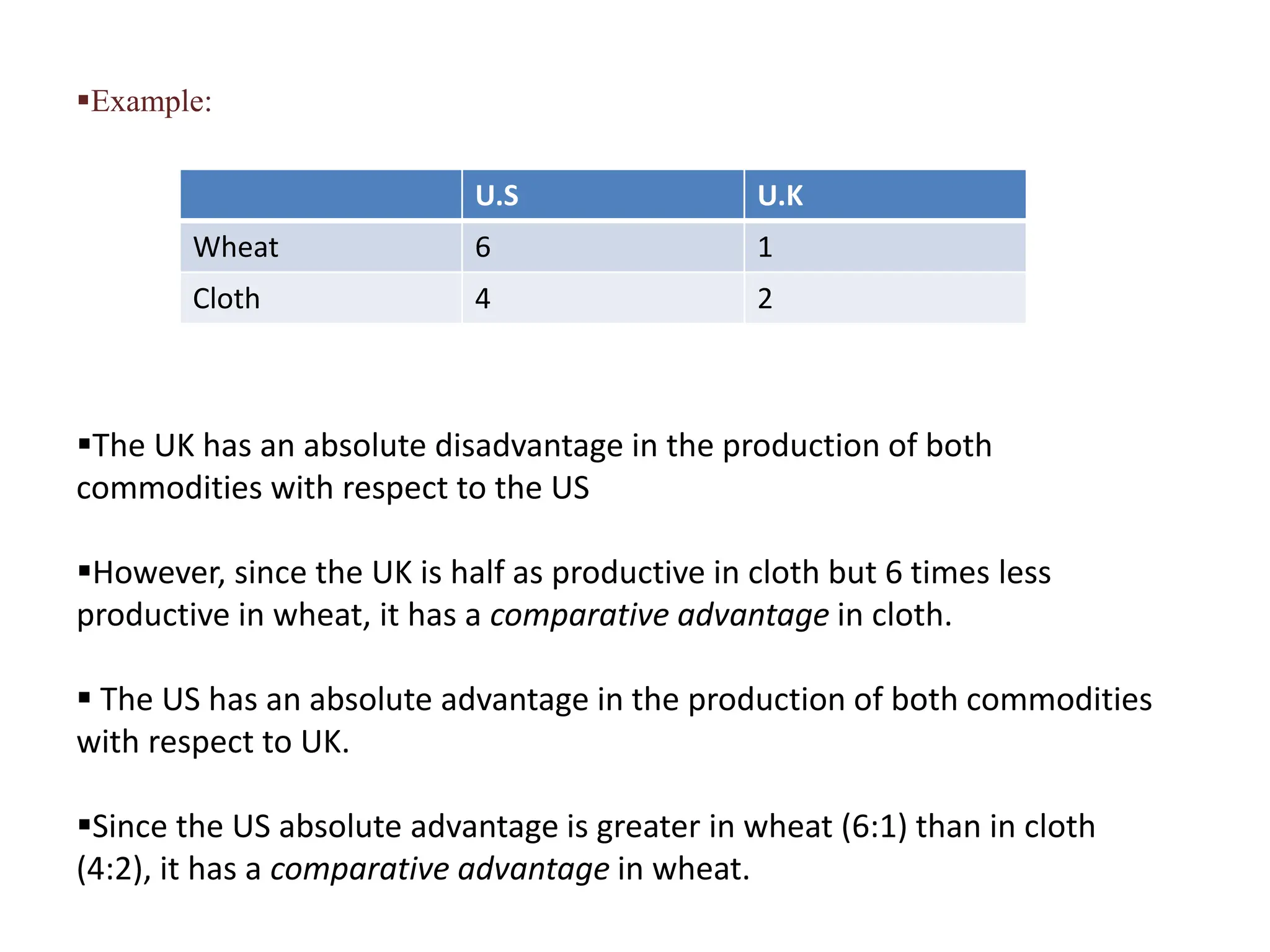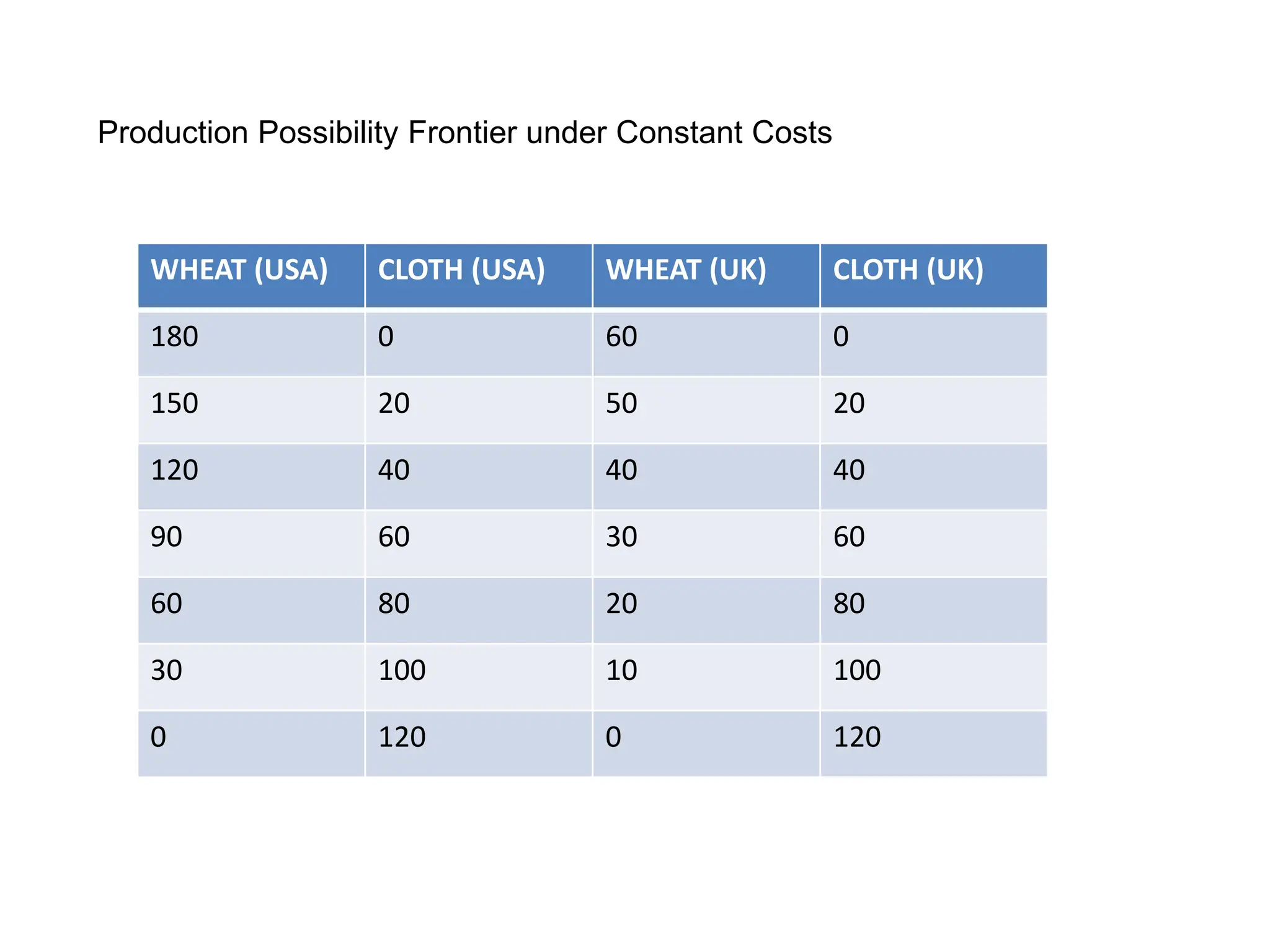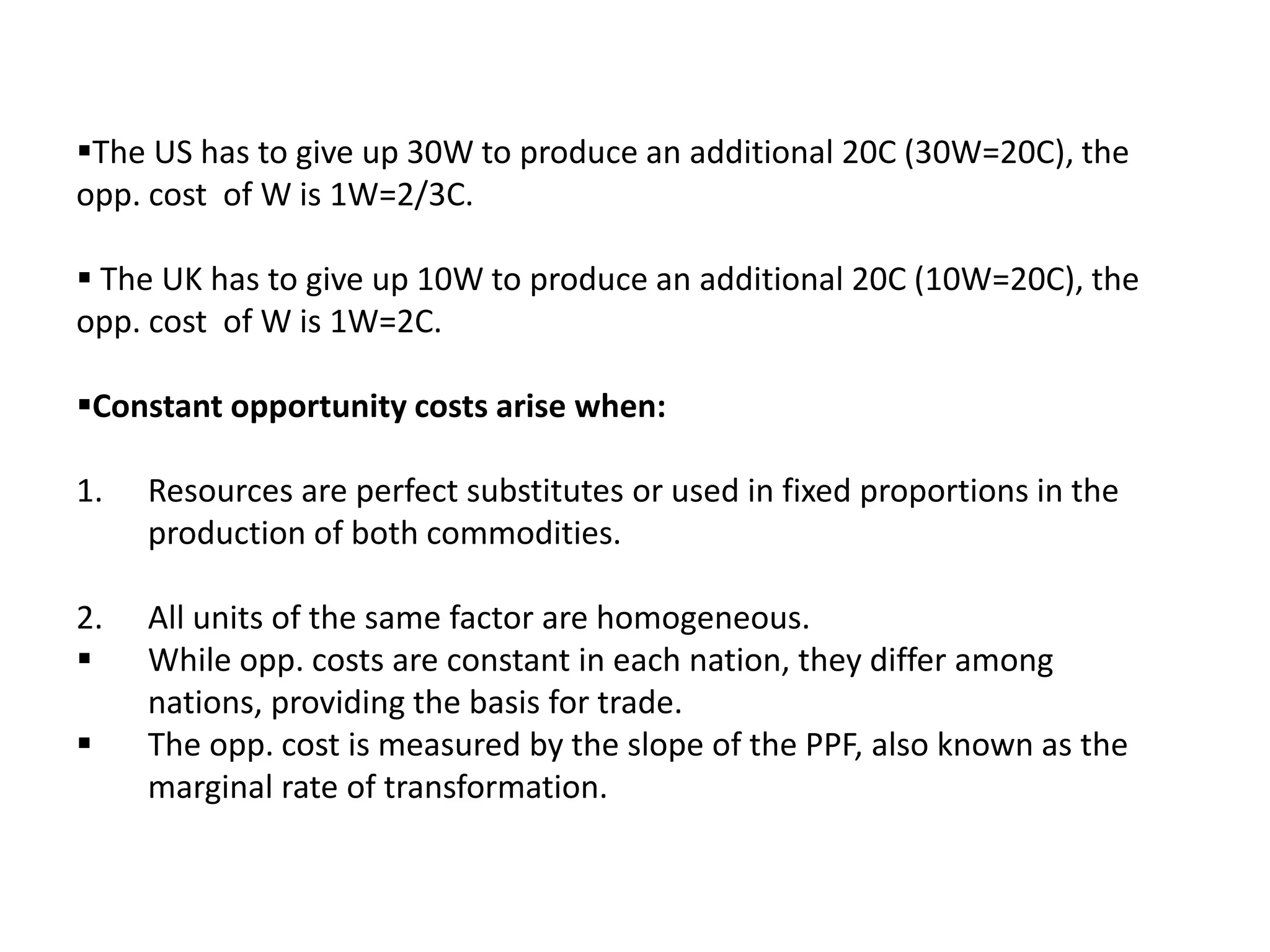The document discusses the theories of absolute advantage, comparative advantage, and gains from trade. It explains that according to absolute advantage, nations should trade when one has an advantage in producing one good over another. Comparative advantage expands this to say that even if a nation is worse at producing both goods, it should still specialize in the good where its disadvantage is smallest. This allows both nations to increase total production and consumption through specialization and trade. Diagrams of production possibility frontiers are used to illustrate how gains from trade arise from specialization enabled by comparative advantage.

